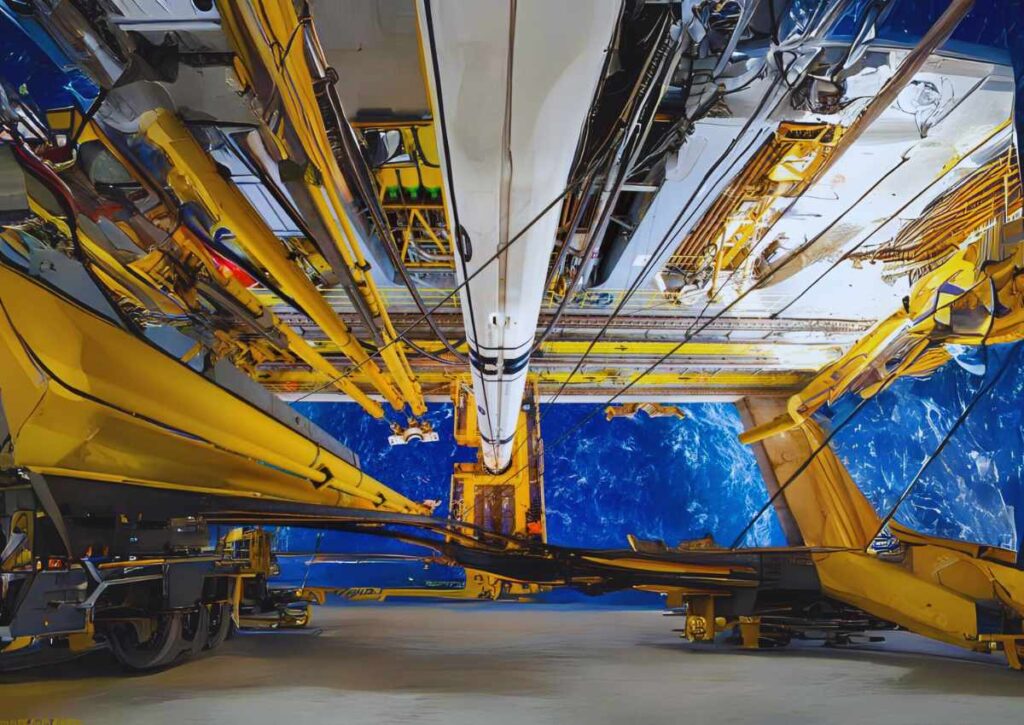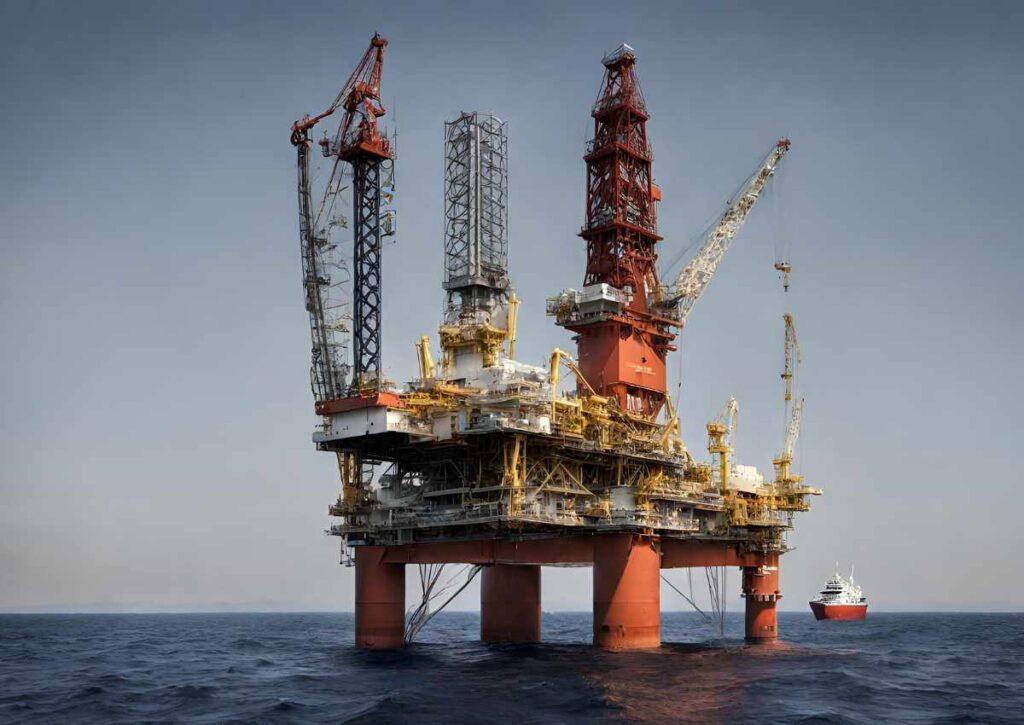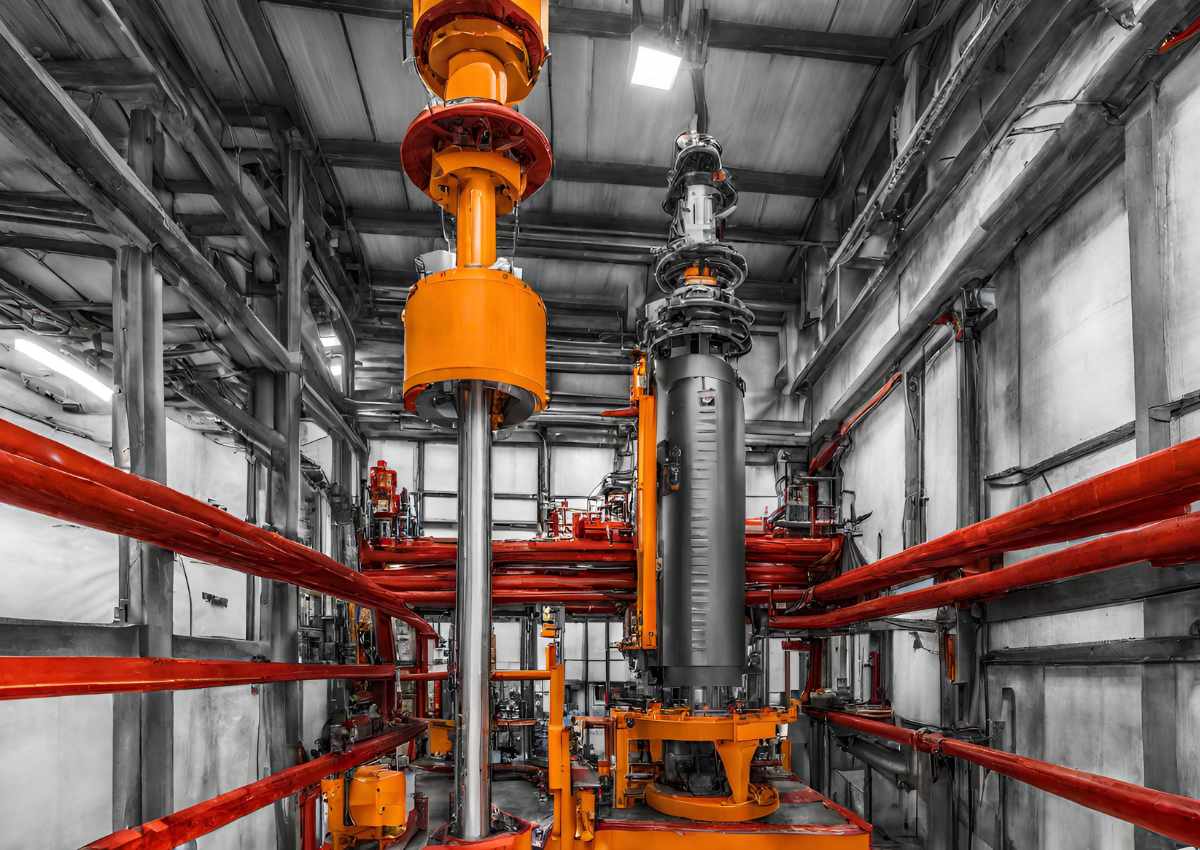In the intricate world of offshore oil exploration, where depths are profound and conditions are challenging, the drilling riser emerges as a critical component, bridging the gap between subsea wells and surface facilities.
Let’s delve into the depths of this crucial conduit and unveil its significance in ensuring safe and efficient drilling operations.
What is a drilling riser?

A drilling riser serves as a temporary extension of a subsea oil well, connecting it to a surface drilling facility.
Broadly categorized into two types, marine drilling risers and tie-back drilling risers, each plays a distinct role tailored to specific drilling environments.
Marine Drilling Riser: Navigating Complex Waters

A marine drilling riser, primarily utilized with subsea blowout preventers (BOPs), finds its domain aboard floating drilling vessels.
Characterized by a large diameter and low-pressure main tube, it incorporates external auxiliary lines for various functions, including high-pressure choke and kill lines for fluid circulation to the BOP, along with power and control lines.
The complexity of design and operation demands extensive engineering analysis to ensure high reliability, a paramount requirement in offshore drilling endeavors.
Operating at depths exceeding 20 meters necessitates tensioning the marine drilling riser to maintain stability.
Relying on a marine riser tensioner situated on the drilling platform, it provides a constant tension force crucial for stability amidst the dynamic offshore environment.
Factors influencing the required tension level encompass the weight of riser equipment, buoyancy, environmental forces like waves and currents, internal fluid weight, and provisions for equipment failures.
In a bid to mitigate tension requirements and enhance stability, buoyancy modules, commonly referred to as ‘buoyancy cakes,’ are integrated into riser joints, rendering them close to neutrally buoyant when submerged.
The adherence to international standards, notably ISO 13624-1:2009, underscores the importance of meticulous design, selection, operation, and maintenance of marine riser systems for floating drilling operations.
Serving as a guiding beacon, this standard amalgamates fundamental engineering principles with the collective offshore industry experience, ensuring robustness and reliability.
Tie-back Drilling Riser: Connecting to the Surface

Contrary to marine drilling risers, tie-back drilling risers interface with surface blowout preventers and are typically deployed from fixed platforms or stable floating platforms like spars or tension leg platforms (TLPs).
This type of riser can manifest as either a single large-diameter high-pressure pipe or a set of concentric pipes extending casing strings in the well up to the surface BOP.
In essence, tie-back drilling risers facilitate the conduit for wellbore fluids to traverse from the subsea reservoir to the surface drilling facility, enabling efficient exploration and extraction processes.
Conclusion
In the vast expanse of offshore oil exploration, where challenges abound and precision is paramount, drilling risers emerge as the unsung heroes, seamlessly bridging the gap between the depths of the ocean floor and the surface drilling facilities.
Their intricate design, meticulous operation, and adherence to stringent standards epitomize the dedication of the industry towards safety, efficiency, and sustainability in the pursuit of energy resources beneath the waves.
As the offshore landscape evolves, the significance of drilling risers remains unwavering, underpinning the future of offshore exploration and the quest for energy independence.
FAQs
What is the purpose of a drilling riser in offshore drilling operations?
A drilling riser serves as a conduit, connecting a subsea oil well to the surface drilling facility.
It allows for the transfer of drilling fluids, control of pressure, and deployment of essential equipment during drilling activities.
How are marine drilling risers different from tie-back drilling risers?
Marine drilling risers are typically used with subsea blowout preventers (BOPs) and are employed by floating drilling vessels.
On the other hand, tie-back drilling risers can be either a single large-diameter high-pressure pipe or a set of concentric pipes extending casing strings in the well up to a surface BOP.
Tie-back risers are commonly deployed from fixed platforms or very stable floating platforms like spars or tension leg platforms (TLPs).
Why is tensioning necessary for marine drilling risers in water depths exceeding 20 meters?
Tensioning is required to maintain the stability of marine drilling risers in offshore environments.
In deeper waters, the riser must withstand significant forces from waves, currents, and the weight of internal fluids.
Tensioning helps counteract these forces and ensures the riser remains stable during drilling operations.
What are buoyancy modules, and how do they contribute to drilling riser stability?
Buoyancy modules, also known as ‘buoyancy cakes’, are added to drilling riser joints to achieve near-neutral buoyancy when submerged.
By reducing the effective weight of the riser, buoyancy modules minimize the tension required to maintain stability. This helps enhance the overall performance and safety of offshore drilling operations.
What standards govern the design and operation of marine drilling risers?
The international standard ISO 13624-1:2009 covers the design, selection, operation, and maintenance of marine riser systems for floating drilling operations.
It serves as a comprehensive reference for designers, component selectors, and equipment users and maintainers, ensuring adherence to industry best practices and safety protocols.
Also Read
Big Stan Drill Rig: World’s Biggest Drilling Equipment









